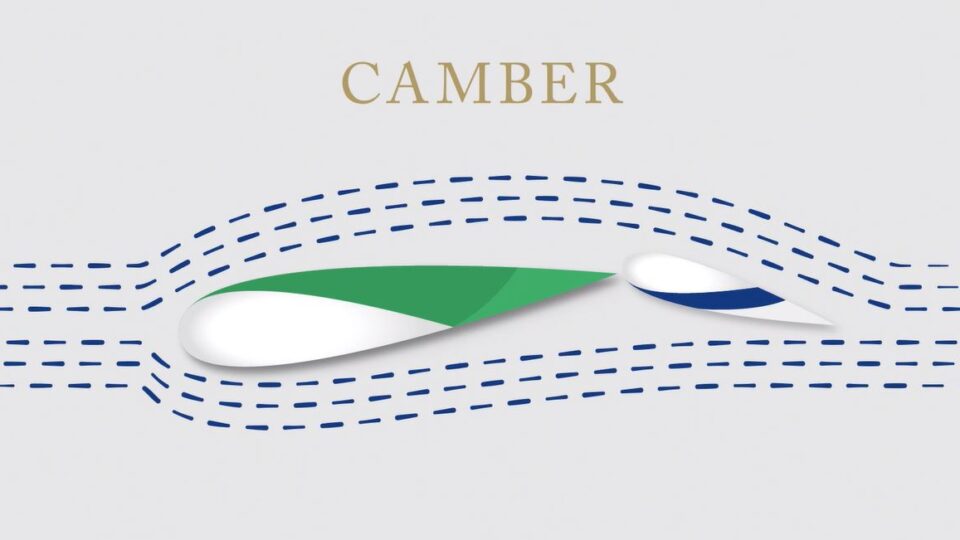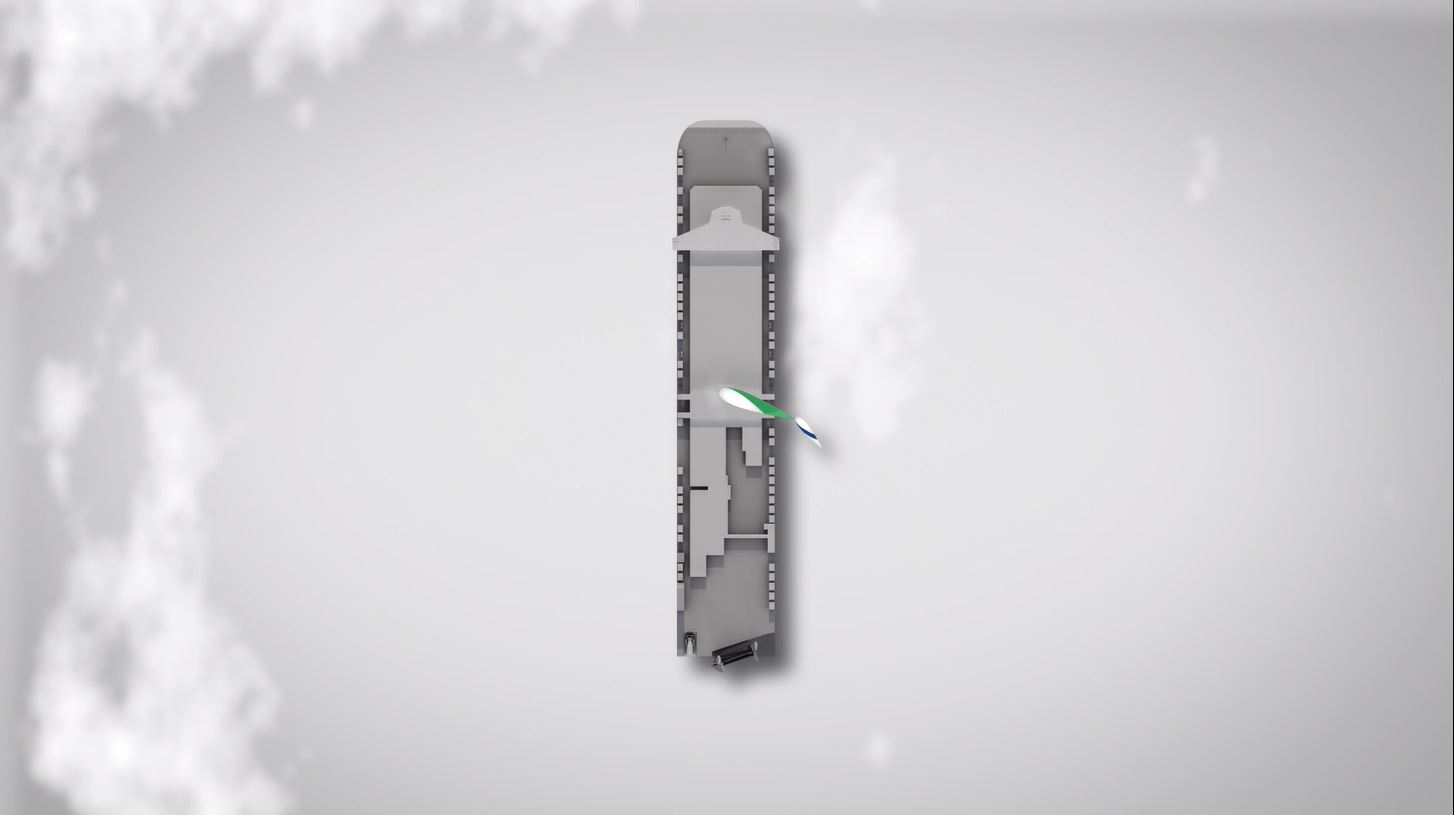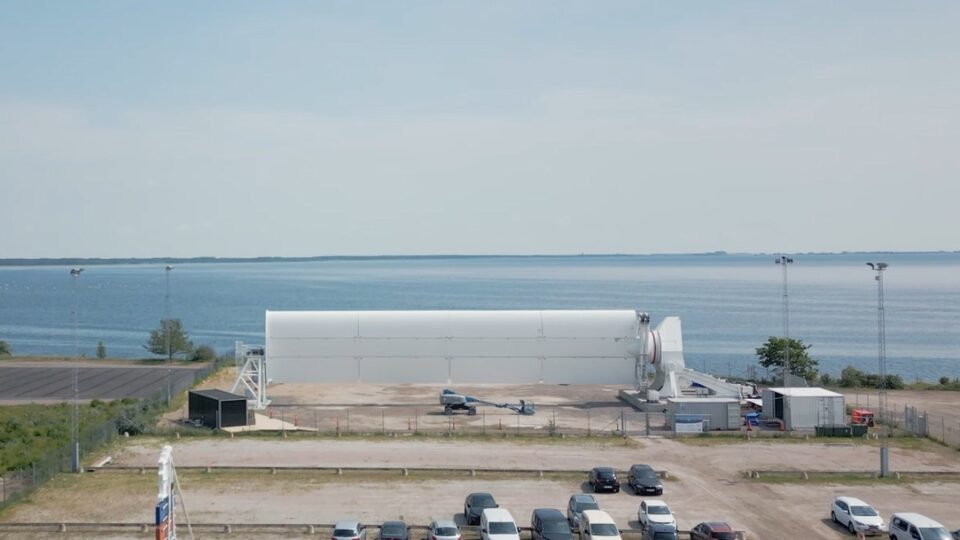You can think of the Oceanbird wing sail like a vertical airplane wing, with influences from traditional sailing. In this animation, we show how Oceanbird use aerodynamics to move a vessel forward and how the wing interacts with the wind.
The wing sail is not a windmill on deck, producing electricity to move the vessel forward. Just like an airplane uses air pressure to move upwards, the Oceanbird wing sail uses it to move forward. The air flow on the other side of the wing goes faster than the air beneath, and the pressure differential generates so called lift.
To generate the most thrust forward, it is important to position the wing sail to get the optimal angle of attack from the wind. Therefore, the wing sail follows the wind and unlike a plane, the wing must be symmetrical to be able to take power from the wind in both sides.
Two segments to create camber

However, the symmetric design has no curved camber like a textile sail would get when the wind blows, which optimize the power that you can harvest from the wind. We have solved it but letting the main sail and flap form a camber, where the wind is accelerating on the outer part of the wing and decreasing on the inner part. This increases the lift and therefore the overall performance.
“The two-part wing sail design enables us to generate substantially more power relative to the wing size. This gives us many added benefits, such as less material usage, low weight and smaller deck footprint to mention a few. We have the best possible team continuously optimizing the design” says Oceanbird Technical Director Mikael Razola.

The primary focus for the technical team is now to get the design ready to enable construction of a full-scale wing prototype on land by the end of next year. Six months later, in the middle of 2024, the first wing sail prototype will be installed on a vessel.
Fuel will be more expensive

Wallenius Wilhelmsen have announced their intention of ordering the first vessel from the Oceanbird concept, and are of course following the technical development closely. They are already taking several actions, to make their RoRo fleet, which is the world’s largest, more sustainable.
“We know that fuel in the future will be significantly more expensive than what it is today and fuel such as ammonia and methanol will require more space affecting the vessels earning potential. By utilizing the wind both emissions and fuel costs can be reduced and the reduction in a vessels loadable deck space can be limited. We look forward to continuing the collaboration” says Lars Dessen, VP Newbuilding and Projects Wallenius Wilhelmsen.



